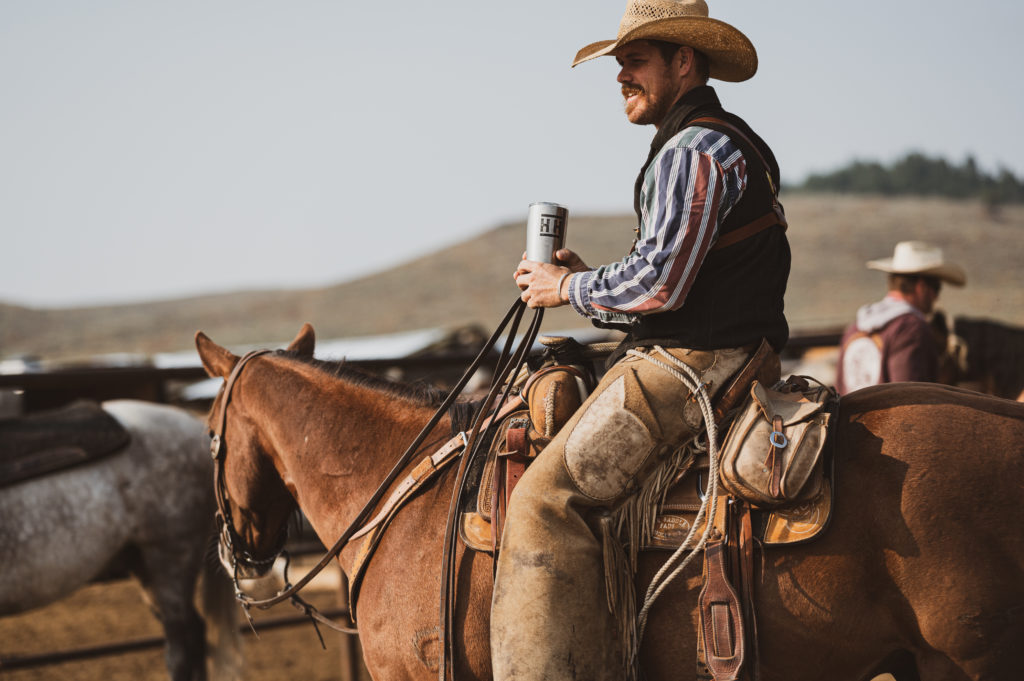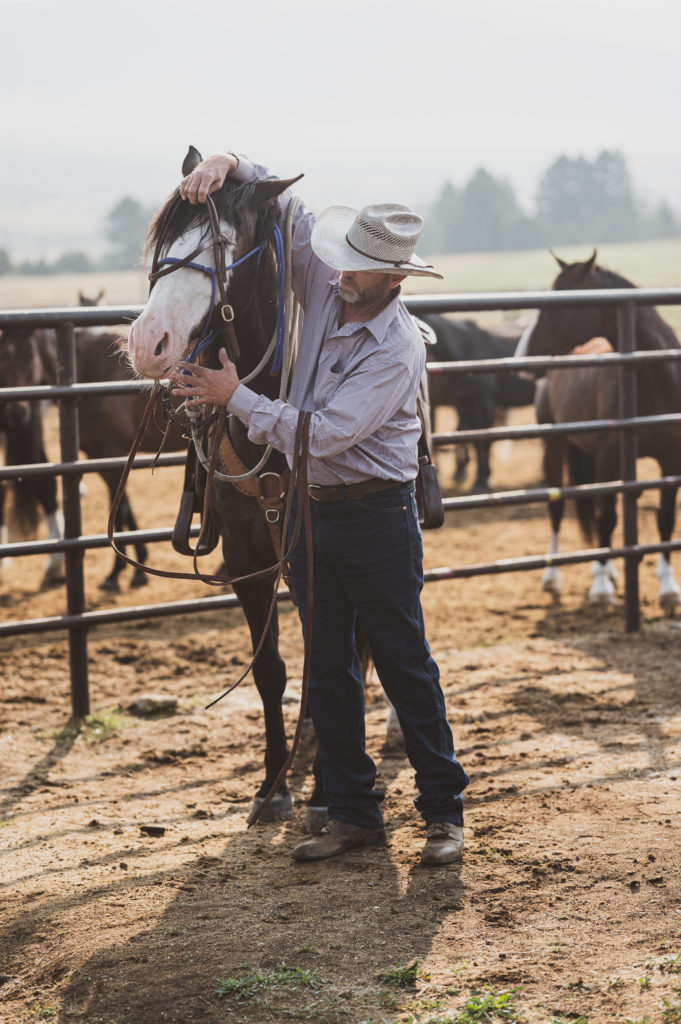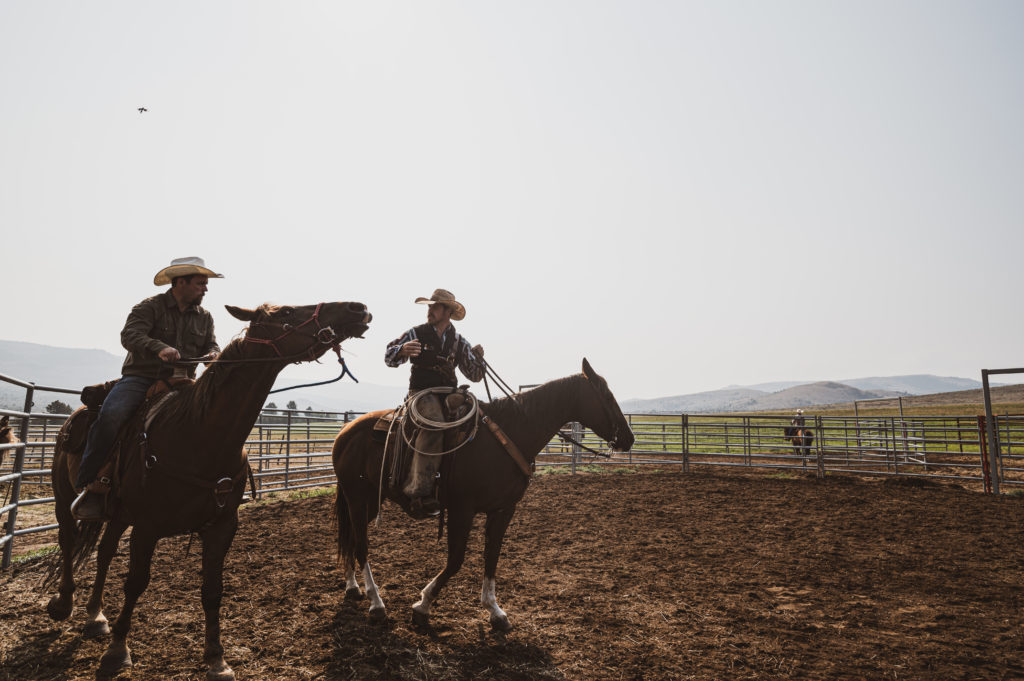Heroes and Horses: Healing Veterans Through Horsemanship
March 24, 2022
Aside from sharing knowledge of horsemanship and equine law, one of the fundamental values of Fairway Stables™ is to support 501(c)(3)s making a real impact in the equestrian and ranching world. When founding this business, there was no question as to who I wanted to feature first. I am humbled to share Heroes and Horses with you today.

Table of Contents
Heroes and Horses
In September of 2021, Mr. Mark Davis, the COO of Heroes and Horses generously took the time for a virtual meeting with me. So, I asked him to share more about this incredible foundation for veterans.
I first learned about Heroes and Horses years ago, after co-founding the Special Forces Support Fund. The Special Forces Support Fund supports actively deployed special forces soldiers. So, I continuously keep a watchful eye out for other 501(c)(3)s that support soldiers after deployment.
Heroes and Horses has truly earned the title of being a “one of a kind foundation” in a sea of veteran support funds. Currently, there are more than 65,000 veteran-related nonprofits in the United States. Billions are spent each year on programming meant to assist in reintroducing veterans back into civilian life. In the words of Heroes and Horses, “our veterans don’t need more help, they need better help”.
This 501(c)(3) nonprofit operates out of Belgrade, Montana. It helps veterans heal as they transition from active duty to civilian life.
Simply put, it’s not just what Heroes and Horses does; it’s how they do it.

Heroes and Horses: Overview
Heroes and Horses was founded by navy SEAL Micah Fink. After serving as a SEAL and military contractor with Special Operations in some of the most dangerous places on earth, he speaks openly about the difficulty he endured when reacclimatizing back to civilian life. (I highly recommend you take the time to listen to this podcast.)
The depression and PTSD that often accompanies a soldier’s reentry into civilian life is a concept veterans (and military families) understand all too well. Attempting to find purpose behind activities many of us take for granted, such as going to the gym, or clocking in at a 9-5 doesn’t quite translate when you’ve dedicated your life to conducting operations that most of the world will never know about, in some of the most dangerous places in the world.
In the words of Heroes and Horses, we’ve done a great job of turning civilians into soldiers. On the other hand, we’ve fundamentally failed at the opposite- reacclimatizing soldiers back into civilian life. “High unemployment rates are a direct result of a system that is not created to support the redefining of purpose after service. There is a huge issue with the over-prescribing of psychiatric medications as a first line of defense; There is an over-reliance on government assistance programs, which also perpetuates a victim-mentality among the veteran population.”
Because of this, the mission of Heroes and Horses is to “un-program the programmed. To offer combat veterans an alternative solution for defining and approaching their physical and mental scared. A solution that does not include prescription medications, or traditional psychotherapy, but rather the opportunity to use tools to redefine their purpose, rediscover their inner strength, and maximize their potential by taking ownership of their lives for the first time since leaving service.”
How do they achieve this? Through horses, of course.

Heroes and Horses: The Program
When Mr. Davis and I began our conversation, he was quick to point out what any horseman would wonder. The Heroes and Horses program is not a dude ranch experience.
It’s pretty much the exact opposite.
We discussed how, through our own exposure to the military community, we have seen that all too often. Unfortunately, soldiers who serve as the “tip of the spear” of the United States military may suffer both visible and invisible scars in combat. Far too often, they’re treated as “fluffy” upon reentry to civilian life. If treated at all, they’re treated with velvet gloves and psychiatric drugs.
Soldiers are anything but fluffy. Therefore, true healing may require a different approach.
Heroes and Horses “unprograms the programmed” through arguably the most intensive program available for veterans. And it’s all done for the sole purpose of rediscovering inner strength through struggle.
The concept behind Heroes and Horses came from Mr. Fink’s own experience repurposing his life after deployment; specifically, through outdoor adventure and horse packing. For those who aren’t familiar, “horse packing” is a specialized form of backcountry camping. Participants ride horses, typically with a string of pack horses or mules carrying supplies, gear, and food.
The Heroes and Horses program is 41 days long. It removes any of the “velvet gloves” that are all too frequently used with veterans. It does not matter if a participant is familiar with horses or not. They are matched with a horse based upon personality. Within a week, they’re on a full-time backpacking excursion in the backcountry of Montana. From sunup to sundown, they spend all day working with horses, and participating in various forms of physical therapy.
But, not just any horses. Mustangs.

Healing Through Horsemanship
As Mr. Davis and I laughed about on our call, you can’t lie to a horse, and they can’t lie to you. What you can get away with faking, or internalizing won’t really fly when you’re on the back of a horse. Particularly, when you’re on the back of a mustang, backpacking through the mountains of Montana.
To date, the Heroes and Horses program has 70 horses (most of them are wild mustangs trained by the staff). The decision to work with mustangs was not arbitrary- nothing about the Heroes and Horses program is. As Mr. Davis explained, this is the story of the unpurposed horse and the unpurposed person. This film shows the incredible behind the scenes journey of how these horses are selected:
As any horseman knows, working with horses and developing the art of horsemanship requires the rider to communicate. In other words, a rider must channel his or her energy and emotions to communicate with the animal. It doesn’t happen overnight. What is unique about this program is that most, if not all, veteran rehabilitation foundations focus on the opposite: numbing, or a quick fix. As Mr. Davis explained, this program does the opposite.
Heroes and Horses work with soldiers who have experienced both visible and invisible scars in battle. Essentially, they are left to just “figure it out”. Think, for example, of soldiers who maybe are one day, jumping out of a plane at 25,000 feet. Or maybe, working within the camaraderie of a platoon. The next day, they could be medivaced out of the field, maybe not even seeing their team again. They arrive home, are “processed through the system”, per se. Then, they have to adjust to suddenly having no job, no team. On top of that, they receive “coping mechanisms” intended to numb (narcotics) or bury.
Editor’s Note: This is not intended to slight other veteran foundations. However, when looking at the facts as a whole, it’s no wonder depression and PTSD rates are so high among veterans. Patterns may be reflective of the need for a disruption, which is what this program provides.
Going back to the horses, why mustangs? Similar to the experiences of many veterans, they’re pulled from their band, mismanaged, and lacking purpose in roundup pens. No horse has a better sense of a person’s emotions or behavior than a mustang; you have to earn their trust. If you’re tense, anxious, or angry, a horse will know right away. Particularly mustangs. The other thing about mustangs? They’re very in tune with hierarchy. So, until the rider and the horse form a bond, they’re continuously testing, to see who falls where.
Additionally, a horse will reflect their rider’s behavior and attitude. They’ll show you the raw truth, even if you’ve tried to hide it from yourself. They’re not just a vehicle carrying vets across a mountain, they’re a direct reflection of the rider’s behavior or attitude. So, in order to be successful, the participant must be a leader, and work to gain the horse’s trust. This requires tools, time, and grit. Which often unearths a level of self-awareness that the veteran system has shuttered.
Over 41 days, participants in Heroes and Horses work with the same horse. Additionally, participants stick to a whole-food diet, mindset, meditation, breathing techniques, a Lakota sweat lodge, cold plunges, PT, and wilderness. At a glance, the program starts with one week (“Ranch week”) where participants learn the fundamentals of horsemanship. They get to know their horse and acclimate to the program. In Phase 2, they head out into the wilderness. At this point, the program becomes self-run, with a different participant acting as the leader each day. On the last day, the program ends with a 10,000 foot hike up a mountain. This symbolizes the fact that behind every mountain climbed, there’s always another. But, now the participants once again have the tools of inner strength allowing them to climb the next.
As we closed our conversation, Mr. Davis and I acknowledged that to those who aren’t familiar with this type of riding, this could all sound idealistic. That’s fine. There is absolutely nothing fluffy about this program, and nothing given. Only earned. One participant said: “Every hour of every day is full of some sort of pressure up here. If you put pressure on coal once, you’re never going to get a diamond. But, if you continuously apply pressure, it starts to recreate that strength that we as service people had the whole time, and we’d forgotten.” Source: Uninterrupted Data.

In conclusion,
I want to sincerely thank the entire Heroes and Horses team. Not only for their dedication to the veteran community. But also, for the tangible way that this foundation supports our soldiers upon their reentry into civilian life. Through my work with the Special Forces Support Fund, I have had the fortune of working with other 501(c)(3)s. But, Heroes and Horses stands out. Not simply due to their novel approach to veteran support, but the integrity with which they run their program. Frankly, they set the bar for military 501(c)(3)s.
I would also like to personally thank Mr. Davis for the extraordinarily generous donation of his time for this interview. It was an absolute pleasure.
For more information about this incredible foundation, I encourage you to visit heroesandhorses.com. Please note that the 2022 application period ends on March 31, 2022. If you know of a veteran that could benefit from this program, I encourage you to share this with them. Additionally, if you would like to contact Heroes and Horses directly, you may contact:
| Karynne Anderson Development Manager at Heroes and Horses |
| A 1445 Weaver Rd Belgrade, MT 59714P 406-284-2870 E karynne@heroesandhorses.org |
Additional information may be found at:
- Jocko Podcast: 318: Even When The Uniform Comes Off, You Have a Lot To Offer. With Micah Fink.
- 500 Miles Film
- Uninterrupted Data
- The Heroes and Horses Website

Read Next:
- Building a Horse Farm: What We’re Doing and Why
- Equestrian Art: Cayla White from Studio 31
- How To Open a Venue on Your Property (Legally)
Leave a Reply
SUBMIT FORM
To inquire into legal services, consulting services, or overnight boarding availability and options, please fill out the form or send a note directly to fairwaystables@gmail.com.
CONTACT US
Follow along on Instagram at @paige.hulse
This website is solely intended for the purpose of attorney advertising, and for general information purposes only. Nothing on this site should be taken as legal advice for any individual case or situation. This information is not intended to create, and receipt or viewing does not constitute, in no way establishes an attorney-client relationship. An attorney client relationship is only formed when you have hired me individually and signed an engagement agreement. No past results serve in any way as a guarantee of future results.
Leave a note